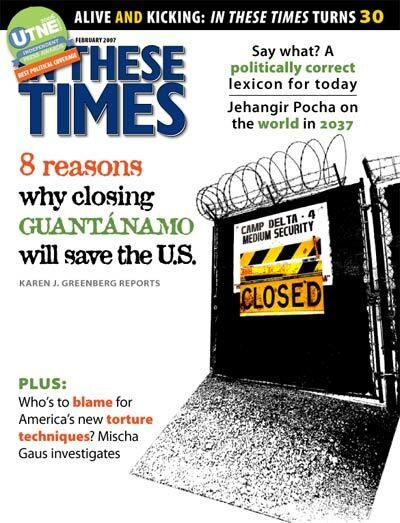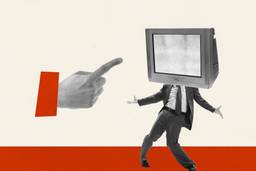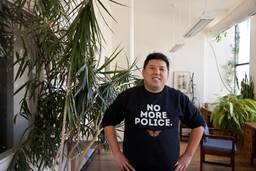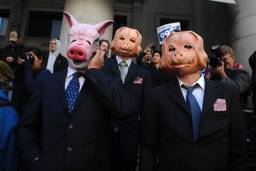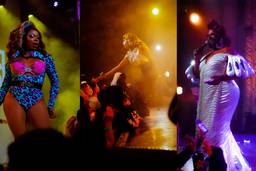Peter Boyle died in December. His wacky turn as Frankenstein’s tap-dancing monster in a Mel Brooks movie led the obituaries, along with his role as the curmudgeonly father on a hideously popular sitcom. When I heard the news, however, I pulled out one of my old issues of Life magazine.
“Agnew on the Warpath” was the lead story. The cover also hymned a new technology: “Cassette TV: The Good Revolution.” The date of the issue was October 16, 1970, a time when rage at the bad revolutions – Black Panthers forcing shootouts with police; students burning down ROTC buildings; fornicating hippies like Janis Joplin and Jimi Hendrix, whose deaths by overdose were also covered in that issue – was what made Spiro Agnew cover-worthy: He was on the road campaigning for the Republican slate by pretending Democratic senators were gobbling acid right alongside the fornicating hippies.
Life also featured a short profile of Peter Boyle. He was 34 years old then, and had just scored his breakthrough success as an actor. But instead of bringing him joy, it forced on him a dark night of the soul. And that is what leads this, my eulogy. It tells us so much more about the man and his times.
The movie Boyle had just starred in was Joe. His character, Joe Curran, was a tool-and-dye maker from Queens, what the New York Times described as an “ape-like, dese-dem-and-dose type,” who strikes up a conversation with a businessman in an East Village bar. “Forty-two percent of liberals are queer and that’s a fact,” Joe says. “The George Wallace people took a poll.” He said he’d like to kill himself a hippie – “just one.”
The filmmakers, when the movie wrapped in February of 1970, had intended the scene as too fantastical to be taken as plausible. Then reality intervened.
On May 4, Ohio National Guardsmen shot four students at Kent State. On May 8, in a spring rain, students from colleges all over New York City gathered at Federal Hall on Wall Street to remember them and protest the Cambodia invasion. Suddenly, from every direction, 200 construction workers bore down on them. In their identical brown overalls, they looked like some sort of Storm Trooper battalion. They carried American flags, of the sort that topped off construction sites. They started berating the police: why weren’t there flags on the flag poles in front of Federal Hall? Had the hippies stolen them? (Actually, per federal regulations, flags were not flying due to inclement weather.) The hard hats then burst through the line of police, who didn’t seem particularly anxious to stop them. The hippies who didn’t manage to melt away were beaten mercilessly, some with building trade implements wrapped in American flags. At Pace University, they set fire to a banner reading “Vietnam, Laos, Cambodia, Kent” and bashed through the locked glass doors to get at the students inside. Trinity Church was turned into a makeshift field hospital, though the angry hard hat mob ripped down the Red Cross banner.
Police only made six arrests. Perhaps they agreed with the construction worker who told the Wall Street Journal, “I’m doing this because my brother got wounded in Vietnam, and I think this will help our boys over there by pulling this country together.” At one point, a worker – his name happened to be Joe – recalled: “The whole group started singing ‘God Bless America’ and it damn near put a lump in your throat … I could never say I was sorry I was there. You just had a very proud feeling. If I live to be 100, I don’t think I’ll ever live to see anything quite like that again.” A municipal secretary tried to pull a fourth hard hat off a kid already being worked over by three assailants. She found herself pummeled in turn: “Let go of my jacket, bitch. If you want to be treated like an equal, we’ll treat you like one.” (Another article in that Life magazine: “Women’s Lib,” by Clare Boothe Luce.)
Joe’s producers had made what they thought was an allegory. It became, by the time of its release, social realism. The week after the “hard hat riots,” Time magazine quoted a Chicago ad salesman, a real-life one: “I’m getting to feel like I’d actually enjoy going out and shooting some of these people. I’m just so goddamned mad. They’re trying to destroy everything I’ve worked for – for myself, my wife, and my children.” In real life, that actually happened: There was an epidemic of hippie lynchings in New Mexico in 1970 and 1971.
This was what the businessman said after Peter Boyle’s character told him he’d like to kill himself a hippie: “I just did.” He explains that he just shot his missing teenage daughter’s hippie boyfriend – tracked him down and murdered him, for stealing his daughter’s soul.
Joe decides he likes this man very much. Together, they set out to find his daughter. When they happen upon a hippie commune, their anger turns to lust, and they enjoy the favors of two of the gamines. Once sated, they go on their shooting spree. One of the girls they shoot, in the back, is the man’s own daughter.
Joe is not a particularly good movie, despite Boyle’s riveting performance. But the film’s argument, though heavy-handed, resembled a book of the time by the radical sociologist Philip Slater, The Pursuit of Loneliness: American Culture at the Breaking Point. Slater argued that people loathed and feared the hippies because deep down they knew the hippies were right – “we fear having our secret doubts about the viability of our social system voiced aloud” – and envied their freedom. Joe made Slater’s argument flesh: an attempt to shock viewers into recognizing that all this hating what you desire led to an uncontrollable spiral of violence.
That wasn’t the message that people received.
Life’s reporter followed Peter Boyle around his West Side Manhattan neighborhood. An excited little old lady approached him: “I agree with everything you said, young man. Someone should have said it a long time ago.” Construction workers shouted, “Joe!” and greeted him like a long-lost friend. Boyle was horrified.
Boyle lived and died a man of the left, practically a pacifist (or, as his “Everyone Loves Raymond” co-star Patricia Heaton, a whiny Hollywood conservative, referred to him “jokingly” on the set, a “pinko flag-burning commie.”) Before he became an actor, he had been preparing to become a monk. In 1968 he was a cast member at Second City in Chicago. That summer, standing with friends in front of a bar, he found himself suddenly chased down the street by cops; it was the summer of the Democratic National Convention. Sitting in front of his apartment, he felt a sneeze coming on; it was tear gas, wafting down from Lincoln Park.
In interviews when the movie came out, Boyle agonized about his portrayal of Joe: “Sometimes I worry we were too hard on him.” He’d talk about how guys like Joe were living on the bubble, how their horror of disorder, their racism, had its roots in economic anxiety: “He’s got every penny he ever made sunk into his house, and a black family is moving in on the same block. … It’s a real problem that most liberals never encounter.”
This was a wise observation – wiser than Slater’s, or the makers of Joe, who fantasized the left-wing reaction to bourgeois alienation was purely innocent. It wasn’t. A perverse pleasure can be had in seeing the characters one identifies with depicted as enlightened apostles of peace and love, then watching as they are mowed down as the victims of sadistic know-nothings. Indeed, Pauline Kael came up with a label for this particular neurosis: “liberal masochism.” That explains why legions of countercultural youth flocked to see Joe – and stood up at the end, shrieking almost joyfully: “I’m going to shoot back, Joe!”
“I’m scared,” Boyle told Life. “I’ve been scared for a couple of years. I get scared when I meet people like Joe.” But he was scared of Joe’s symbolic victims, too. He’d walk down the street and experience a stab of horror: What if they shot him?
I didn’t see any obituaries that discussed this, the most interesting and profound chapter of Boyle’s public life. It is something the media prefers to repress: the fact that Americans often hate each other enough to fantasize about murdering each other, in cold blood, over political and cultural disagreements. Much better to celebrate dancing Frankenstein monsters, curmudgeonly sitcom dads. And, by the way, the geniality of dead presidents. Gerald Ford? He “healed” a nation. Ronald Reagan? His disposition was always “sunny.”
Only good revolutions in America. Mustn’t upset the children.
Rick Perlstein, an In These Times board member, is the author of Reaganland: America’s Right Turn, 1976-1980 (2020), The Invisible Bridge: The Fall of Nixon and the Rise of Reagan (2014), Nixonland: The Rise of a President and the Fracturing of America (2008), a New York Times bestseller picked as one of the best nonfiction books of the year by over a dozen publications, and Before the Storm: Barry Goldwater and the Unmaking of the American Consensus, winner of the 2001 Los Angeles Times Book Award for history. Currently, he is working on a book to be subtitled How America Got This Way.
